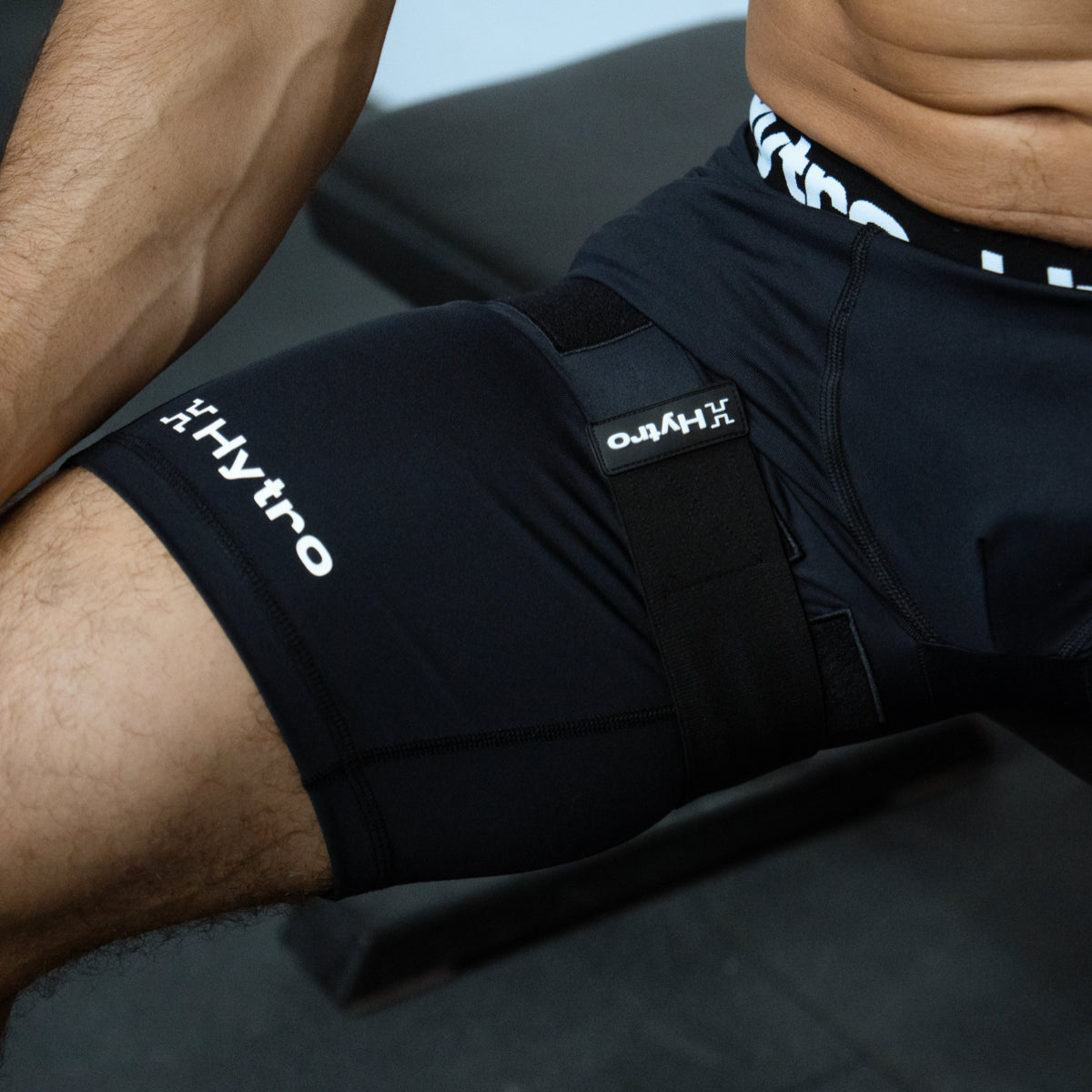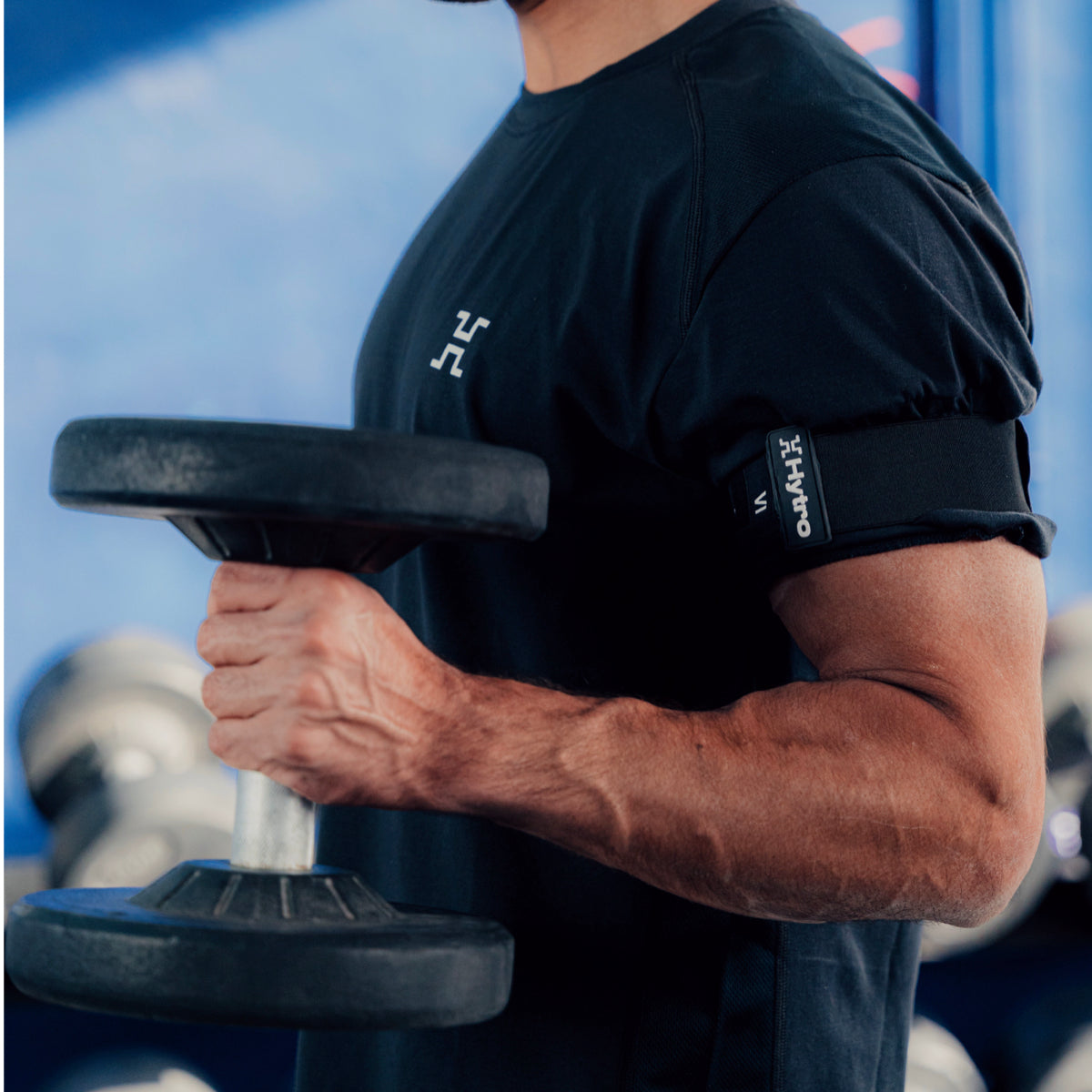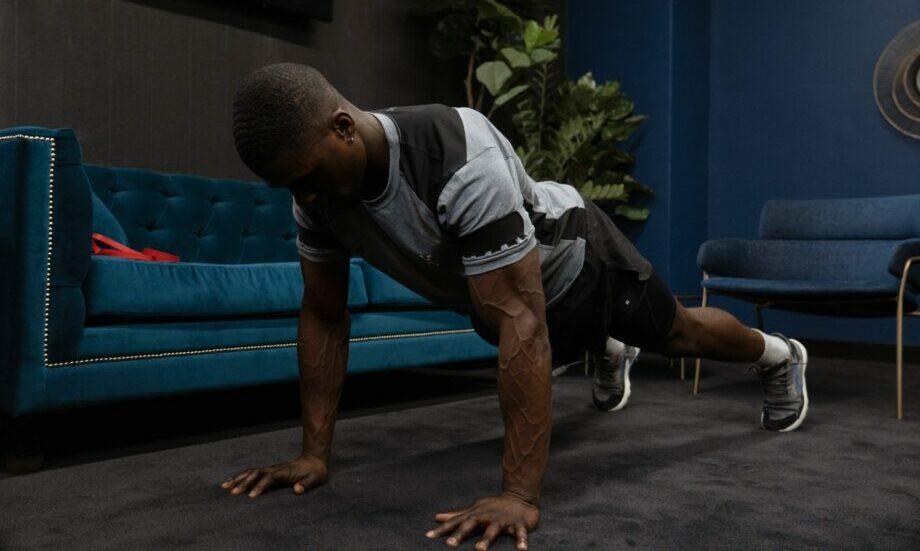CrossFit is unique in that it covers such a wide range of attributes, which is why training is also so varied. Using innovative techniques such as Blood Flow Restriction can give you an advantage over other athletes and set you on your way to not only becoming a better CrossFit athlete, but also breaking your CrossFit records.
Some swear by it. Others can’t stand it. But no matter which side of the fence you stand on, there’s no denying the ever-growing influence of CrossFit. With participation in the high-intensity discipline at a record high – there are over 15,000 CrossFit-specific gyms worldwide – the quest for improvement is being sought out by more and more people. So we thought we’d save you the hassle. That’s right. We’re going to share all of our CrossFit performance tips with you so you know how to improve at CrossFit. From the importance of confidently completing key movements to CrossFit tips for enhancing strength, endurance and even mentality, we’ve got you covered.
Movement is Magic
Before attacking your WOD (that’s workout of the day for those not familiar with CrossFit) and aiming to crush those exercises in record time or with AMRAP (as many reps or rounds as possible), it’s first important to take a step back and focus on the absolute fundamental: form. To an outsider, CrossFit may seem like a relentless blend of functional strength and speed, but without the correct movement patterns, a CrossFit athlete will only be able to achieve so much. Think of it as a ceiling. The better your movement pattern, the higher your ceiling.
Taking the time to master simple CrossFit movement patterns pays dividends when it comes to more complex movements, such as double unders and bar muscle-ups.
Performing exercises with correct form will reduce energy wastage, making your movements more efficient and allowing you to work at a higher intensity throughout a session. Importantly, it will build strength, power, balance and control, all of which will reduce the risk of injury. In such a high-intensity activity, injury can be common. It’s tough to carry on improving when you’re sitting on the sofa injured (though recovery through Passive-BFR will help – more on that later), so it’s best to take every step possible to limit the possibility. With the proper form, no unnecessary force or pressure will be placed on the parts of the body that shouldn’t shoulder the load. For example, taking your knees over the toes when performing a squat places too great a load on the knees, potentially causing all sorts of problems later down the line.
Doing the actual move with the actual form may be tough at first. If you can’t do the exercise prescribed, stick at it! There may be a temptation to revert to what you know so you can do the workout quicker and maybe even achieve a new record. Perhaps you’ll cut corners to raise your score. Don’t! Think of the long-term benefits over the short-term gains. By stepping out of your comfort zone and persevering you will one day be able to smash your WOD as guided – and be even more competitive in the process.
Form is everything. But it’s not the only thing.
Mobility enhances movement, allowing for a greater range of motion at joints – a vital attribute in CrossFit. Mobility improves efficiency and reduces the risk of injury. Take squats: the knees typically come over the toes due to a lack of mobility and stability in the ankle or hip.
Once the movements have been perfected through form, mobility, repetition and observation (you can film yourself doing the moves and watch them back or ask another CrossFit athlete or coach to watch you and provide feedback), then you can progress to adding speed and resistance.

Start with the basics
CrossFit is a functional discipline, mimicking the movements used in everyday life and utilising multiple muscle groups. Broadly speaking, the movement patterns can be split into four core groups:
- Pulling
- Squatting
- Hinge Patterns
- Overheard Movements
Of these four, squats can arguably be considered the most important. As many as 50% of CrossFit movements can be reliant on good basic squatting technique and performance. Perfecting the basics of the squat will therefore help you to perfect these movements. That means squatting right before you squat heavy:
- Have hips driven back and slightly lower than the level of the knees, which should be tracking outward
- Feet just further than hip-width apart
- Sit into the position with spine neutral and upright
- Engage your core
- Drive your heels into the ground as you push back up, then keep your heels to the floor as you squat back down
Emphasise the technique by pausing mid-squat and checking your shape in the mirror or through filming. When you’re happy with your form in an air squat, you can then progress to variants such as a barbell, front, overhead and pistol squats.
The other core movements should be perfected with the same method: movement first, resistance and variations later. Be strict with yourself and reap the benefits further down the line. Refuse to count reps that are not perfect or if you wobble (for example, stepping forwards when coming out of a barbell lift).
All the right attributes
Part of the attraction of CrossFit is that incorporates such a wide range of functional activities that value a whole load of high-intensity attributes. Athletes need to be prepared for whatever is thrown their way, whether that’s weightlifting, running, jumping, biking, swimming or explosive bodyweight activity. CrossFit is undoubtedly a tough test on an athlete’s fitness levels. We’ve picked out the three main areas to work on for improved overall performance.

Strength
Needed for the most difficult competition movements, gains in strength not only make the heavy lifts easier, but also help with the bread and butter bodyweight exercises. Strength training should focus on muscular imbalances and asymmetries, incorporating a wide range of muscle groups. While bodyweight work is an effective way of building muscle, it’s important to also include loaded movements.
BFR Training comes in use for CrossFit athletes seeking to build strength. BFR has multiple benefits to CrossFit athletes, most importantly allowing them to work at around 20-30% of their one rep max for similar gains to that of working at 70% one rep max. This means that BFR enhances the body’s ability to hypertrophy beyond that of high intensity resistance training alone. Furthermore, enabling the body to work at a lower intensity reduces muscle strain, allowing the athlete to recover more quickly and reducing the risk of injury.
Key to CrossFit strength work is progression. As you improve, adjust your reps and sets to constantly challenge your body and enhance hypertrophy.
Endurance
WOD got you doing 100 air squats followed by 90 sit-ups? You can have all of the strength in the world, but without a high level of endurance that’s going to be a battle. Even if you do make it through the set, attempting to get your breath back in the rest period is going to be hell. And then, of course, there’s the running, rowing, burpees and all of the other metcons that CrossFit throws your way.
Key to increasing CrossFit endurance levels is raising your lactate threshold. When you work anaerobically, you produce waste product such as lactic acid that inhibits muscle contraction. Typically, the anaerobic system can provide energy for up to four minutes before the aerobic system takes over. The aerobic system cannot produce energy as quickly and is therefore less suited to high intensity activities such as CrossFit. Improving the length of time your body spends in the anaerobic system – as well as the rate of recovery – therefore allows you to continue a high intensity output for a longer period of time.
Training at high intensity for 1-3 minutes increases the lactate threshold and pushes your body past its aerobic capacity for a short period. A superset such as a heavy weightlifting movement followed by a skill move is ideal, putting the body through high demands that are CrossFit-specific. Interval training is therefore ideal. Training in intervals builds speed, increases lactate threshold and increases endurance. As your body adapts, rest periods can then be reduced and work periods increased.
BFR Training boosts both cardiovascular and muscular endurance. Research suggests that it increases the rate at which glucose and oxygen are delivered to the muscles. Aerobic capacity improves along with VO2 max.

Mentality
We’ve all been there: you feel like you’re spent with nothing left to give. But you have to do another set. Your body is telling you it’s done. What about your brain?
The mind is what separates the great from the good. A positive, can-do mindset is worth its weight in gold when it comes to CrossFit. And the good news? Anyone can develop one!
CrossFit athletes should first analyse where they’re at, what their strengths and weaknesses are and the steps they need to take to improve. Once that’s done, they should set goals: short-term, mid-term and long-term. Goals help to focus the mind further and give you something to work toward. And there are few better feelings than being able to tick off another completed goal.
Goals provide motivation and also allow you to track how far you’ve come. What’s tough today may be easy next week. What felt impossible before will soon become possible. But it isn’t just a case of flicking a switch and having the ultimate mindset. There are plenty of techniques other than goal setting to enhance mindset.
Visualisation is a technique used to improve confidence. It requires you to imagine something happening. Take a rope climb. Before giving it a go, take a second to close your eyes and imagine yourself at the top of the rope. How does the rope feel in your hands? What can you smell? What can you hear? Make it as real as possible – once you’ve done it in your mind, it becomes easier to actually do the task at hand.
Self-talk is another widely-used technique. Simply by giving yourself a motivational pep talk or technical cues, you can increase the likelihood of success. ‘Come on, you can do this,’ muttered under your breath can be powerful encouragement.
The way you carry your body also helps. The mind and body are intricately linked. The better your mind feels, the better the body is likely to work. But the flip side is also true. Approaching a task with confident body language, such as striding toward the station with upright posture and chest puffed out, helps to foster a positive mindset.
There’s no arguing the fact that CrossFit tests the mind by pushing the body to its limit. Adopting these simple measures enhances CrossFit performance and encourages athletes to step out of their comfort zone and push themselves.
Most important, though, is enjoyment. If you enjoy what you’re doing, you’re going to end up getting better at it.
Other training methods to make you a better CrossFit athlete
The best CrossFit athletes train for around 15-25 hours per week. Before you go hurtling into daily high-intensity activities, you must first build slowly. When working at such levels, you can’t suddenly thrust your body beyond what it can handle. Gradually progress your training frequency. Broadly speaking, the more you can train the better you will get. However, it’s important to factor in rest days to allow your body time to recover and hypertrophy, as well as reduce the risk of injury.
Rest days are just one part of the invisible training that top athletes do. We’re not talking about anything supernatural here – by ‘invisible’ we refer to the kind of work that isn’t widely seen, such as diet, psychology work (including visualisation), rest and recovery, and sleep. What you do away from the CrossFit gym is just as important, if not more so, than what you do in the CrossFit gym. These invisible factors have a great effect on energy, growth hormone and motivation levels, to name but a few. When those are at their maximum, you can get more from every training session.
On rest days, it’s still possible to improve your CrossFit performance by observing others. There’s so much you can learn just from seeing their technique, how they approach and transition between activities, and even how they progressed within CrossFit. The internet is a great resource with blogs and YouTube videos readily accessible. So is the CrossFit gym itself.
Athletes can benefit from yoga, which especially focuses on balance and mobility. There are further benefits through strength (gained from bodyweight exercises), posture (improving efficiency of movement) and enhanced breathing technique. Say ‘namaste’ and give it a go.
Underpinning everything is Blood Flow Restriction Training. Strap in and fire up your workout. BFR gives impressive results when it comes to increasing muscle mass and endurance. With no significant muscle damage from sessions, it’s ideal for CrossFit athletes. Incorporate BFR into your weekly workouts as a dedicated workout on its own (20 minutes is plenty) or as a finisher. You won’t regret it. Just two weeks is enough to begin to see the effects of hypertrophy – far greater than traditional resistance training.
What next?
CrossFit is unique in that it covers such a wide range of attributes, which is why training is also so varied. Using innovative techniques such as Blood Flow Restriction can give you an advantage over other athletes and set you on your way to not only becoming a better CrossFit athlete, but also breaking your CrossFit records. Get the basics – such as form – right and the rest will soon follow.
Explore the Hytro BFR wearables to maximise your performance and recovery.





Leave a comment
This site is protected by hCaptcha and the hCaptcha Privacy Policy and Terms of Service apply.